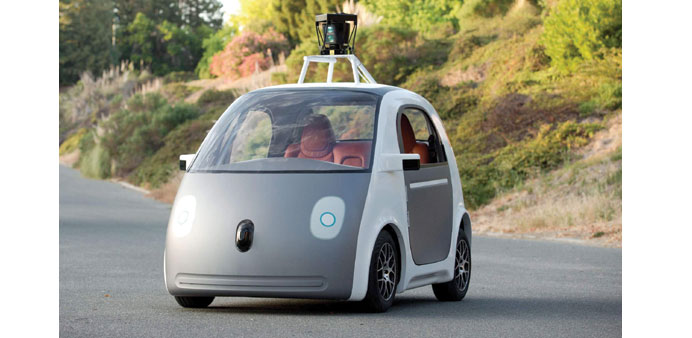By Andrei Sokolov/DPA/Berlin
Cars that need drivers will suffer the same long-term fate as horses, Tesla boss Elon Musk, quipped recently: people will only keep one for sentimental reasons.
He has also predicted that decent driverless cars will hit the streets within three years.
Musk is known for making bold statements. However, there’s a way to go before his prediction becomes true. Bear in mind that California-based Tesla has only turned out 50,000 vehicles this year.
Meanwhile, the entire automotive industry and major players from the world of computers like Google and Apple are working on robot cars. And even creating a car is only the first hurdle. A whole raft of legal impediments must be overcome before the first one can hit the road.
The year 2015 saw plenty of headlines about how companies from Google to Citroen are pressing ahead with vehicles which can traverse roads without the driver’s active attention.
Tesla rolled out its autopilot software, which enables a largely computer-driven car with human backup to drive on the highway and maintain a safe distance to the vehicle ahead.
Toyota said it was investing a billion dollars in artificial intelligence systems while the French PSA group hailed a Peugeot-Citroen-badged prototype. The robot car recently crossed the French border into Spain to complete a loop of around 3,000km running from Paris to Madrid via Vigo.
And in December, Chinese tech giant Baidu successfully tested a driverless car on roads near the firm’s headquarters in Beijing. The modified BMW 3 series carried out a series of manoeuvres, the company said.
Next year will also see the start of a grand prix series for driverless cars, similar to the one for all-electric racers. In the Swiss resort town of Sion, driverless shuttle buses started tests in the pedestrianised old quarter of the city. Each can carry nine passengers.
The mood among experts is upbeat and unanimous: Driverless cars will come. The questions are “when” and “how.”
Robot cars could prevent accidents caused by human error, yet the bigger picture is all about responsibility and relinquishing control. The role of the driver at the wheel must be redefined. At present, the person in charge of a car is expected to be able take over from the gadgets at any given moment.
At the same time, it is clear that even experienced motorists sometimes have trouble keeping a clear head in increasingly complex road traffic situations. This has sent the industry off in search of answers.
“We have to find out if a human being is actually capable of assuming control of the vehicle,” said engineer Ralf Lenninger, who works for major German component supplier Continental.
Continental is currently developing systems which monitor the driver. Cameras scan the driver, even noting the position on the seat. The data is used to calculate reaction time, which can be very quick or last between 13 of 15 seconds if the driver is tired, has nodded off to sleep or has even fallen ill.
To cope with an “emergency” like this, Continental has come up with a hazard programme which can activate the warning flashers and even steer the car gently to the roadside until help arrives.
Google, which has been working on cars that drive themselves since 2009, has opted for a more radical solution. The Google runabout will have no steering wheel or pedals. Only an on-board computer will make be in charge.
“It was a tough decision,” admitted chief developer Chris Urmson. “But if you sit the whole time in a car that does everything right your mind is going to wander.” In other words, an occupant lulled by the automatic driving of his or her car may not react quickly enough when a hazard presents itself.
Considerations like these lead to more questions. How is a computer supposed to behave in a situation where an accident is unavoidable? Who or what is the technology supposed to be protecting first?
Google aims to solve this vexed issue using algorithms.
“In our case, the car’s priority is to steer clear of pedestrians and cyclists,” said developer Urmson. “It then avoids contact with other vehicles in motion. Stationary objects like trees are ranked third.”
Swedish carmaker Volvo, now in Chinese hands, this year unveiled another radical solution for the legal problems that can arise with autonomous driving.
Volvo said that in case of an accident involving one of its driverless cars, the company will assume full legal responsibility.
Engineer Lenninger seem convinced that technology holds the key.
“With an autonomous car I won’t get into this kind of situation in the first place,” said the industry man. “After all, that’s the whole point of self-driving cars.”

Google driverless car.


